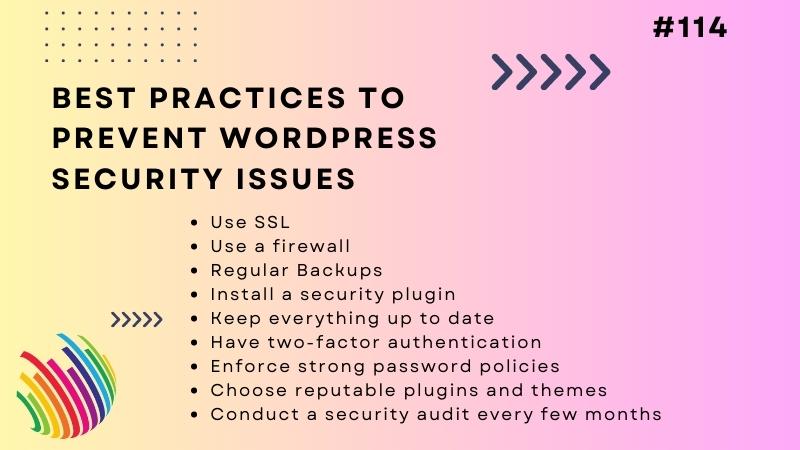WordPress security issues are constantly evolving, and it’s hard to stay on top of them on top of all the work that goes into running a website. So here are some good security practices that can help you protect your website from malware and hackers, without extra effort on your part.
Install a security plugin – The best defense your WordPress has against hackers is a good security plugin. A WordPress security plugin must have a malware scanner and cleaner. Ideally, it should also come with a firewall, brute force protection, bot protection, and an activity log.
Use a firewall – A web application firewall protects your website from all sorts of bad actors. Hackers want to exploit vulnerabilities in your website, in addition to other WordPress security issues. A firewall prevents that by only allowing legitimate visitors in. It’s a must have for your website, and it’s even better if it comes bundled with your security plugin.
Keep everything up to date – Make sure WordPress core, plugins and themes are always up to date. Updates often contain security patches for vulnerabilities and therefore it is essential to update as soon as possible. However, we know that applying updates is not always easy. To minimize risk, update your website securely with BlogVault. Your site is backed up just before the upgrade, and you can see upgrade performance in readiness before you upgrade your website live.
Have two-factor authentication – passwords can be cracked, especially if they are not particularly strong or have been reused. Two-factor authentication generates a real-time login token in addition to passwords that are much harder to crack. You can enable two-factor authentication using a plugin, like WP 2FA or another one from this list.
Enforce strong password policies – We cannot stress enough the importance of strong and unique passwords. We recommend using a password manager. To protect your website from security issues such as brute force attacks, your security plugin should also limit login attempts.
Regular Backups – Sometimes backups are the last resort with a hack, and your website should always have a backup stored off your website’s server. Learn more about how to backup your WordPress site.
Use SSL – Install an SSL certificate on your website to encrypt communication back and forth. SSL has become a de facto standard and Google actively promotes its use for a more secure browsing experience.
Conduct a security audit every few months – review users and their actions on the website, with an activity log. Unusual activity can be an early warning sign of malware. It is also recommended to implement the least privilege policy for administrator and user accounts. Finally, remove any unused plugins or themes on your website. Disabled themes and plugins are bypassed for updates, and WordPess security vulnerabilities go unchecked, resulting in websites being hacked.
Choose reputable plugins and themes – This is a bit subjective as a security measure, but it pays to use the best plugins and themes on your website. Check if the developer regularly updates their product, for example. In addition to online reviews and support experiences from other users, this is an important metric. Also, premium software is generally a better bet overall. But most importantly, never use overridden software. It often carries malware in its code, having been cracked for that very reason. It’s just not a risk worth taking.
You can also harden your WordPress website and learn how WordPress security works.

Leave a Reply